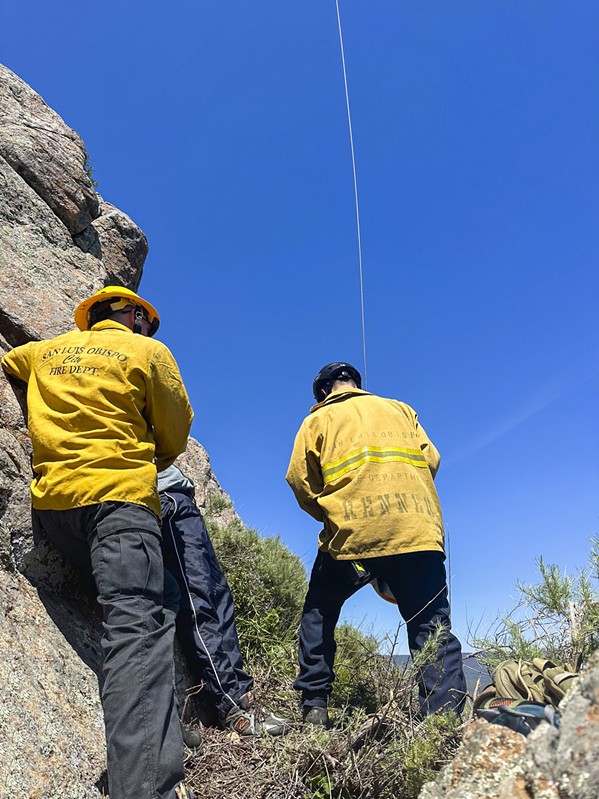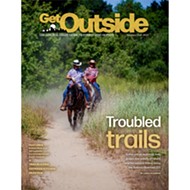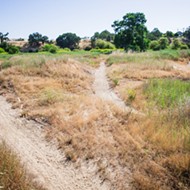San Luis Obispo emergency responders urge caution on city trails but are trained and equipped to rescue if crisis strikes
By Peter Johnson[
{
"name": "Promo Temp Targeted",
"id": "PromoTempTargeted",
"class": "inlineCenter",
"insertPoint": "4",
"component": "15511697",
"requiredCountToDisplay": "0"
},
{
"name": "Ad - Medium Rectangle CC01 - 300x250 - Inline Content",
"class": "inlineCenter",
"insertPoint": "8",
"component": "15582119",
"requiredCountToDisplay": "12"
},{
"name": "Ad - Medium Rectangle LC01 - 300x250 - Inline Content",
"class": "inlineCenter",
"insertPoint": "18",
"component": "15582122",
"requiredCountToDisplay": "22"
},{
"name": "Ad - Medium Rectangle 9 - 300x250 - Inline Content",
"class": "inlineCenter",
"insertPoint": "28",
"component": "15582121",
"requiredCountToDisplay": "32"
}]
In his 11 years on the San Luis Obispo County Urban Search and Rescue (USAR) team, Armando Gutierrez has seen the spectrum of disasters on local trails, like San Luis Obispo's Bishop Peak.
There are lost hikers who veer off-trail; runners who break an ankle and can't hike down; rock climbers who fall catastrophic distances; summit trekkers who lose their balance while taking photos on boulders—and the list goes on.
"I've been on many different calls over the years," Gutierrez said. "When I came on the team in 2011 or 2012, there was an incident [on Bishop Peak] at night in the rain—so we had no helicopter support. That operation took six hours because of the location and the technicality of not being able to just hoist them out. It was a really complex call."
While not every mission is so technical and challenging, 911 calls from SLO open spaces do come in regularly. According to city data, over the past five years, the USAR team logged more than 100 individual rescues. About a quarter required the help of a California Highway Patrol helicopter—with many of those dispatched to the 1,546-foot Bishop Peak.
Gutierrez recalled two particularly harrowing Bishop Peak rescues of climbers who had plunged long distances while scaling the mountain's "P Wall."
"Those are significant heights—people that fall there are falling from 50, 60 feet," Gutierrez said. "The amount of trauma is significant, and it takes technical rescue to even get to the location they usually land. We're using ropes and rappelling. We have to hike to the very top and rappel down to their location. That took hours and hours to get them out. Luckily, we were able to fly them out. They made it and had successful outcomes."
In a city that enjoys more than 4,000 acres of greenbelt and 55 miles of trails, some amount of risk in open space is inevitable. But Gutierrez and SLO Fire Department Emergency Manager James Blattler emphasized that many of the predicaments they see and respond to can be avoided by taking precautions.
Stay on the trail
One of the surest ways to avoid getting injured or needing rescue in open space is to stay on the trail, according to Blattler.
"I don't think we have the exact stats on the number of people rescued that were on trail versus off trail, but I would say the vast majority of the rescues that occur are for people who wander off trail," Blattler said. "That's one of the key messages we want to get out."
Just a few months ago, Gutierrez's team and a CHP helicopter extricated a hiker on Bishop Peak who'd gone off trail "really, really far into the brush." Gutierrez noted that your risk of injury goes up substantially when off trail.
"Everything that's significant [in terms of injury and rescue] is off trail," he said. "It's the bouldering, it's the rock climbing, it's the getting lost."
All official trails offer signage and maps at the trailhead. Blattler advised not to hike in the dark (which is illegal on SLO trails except for Cerro San Luis Natural Reserve), as the poor visibility only increases your odds of getting lost.
Be careful taking photos
SLO County is so gorgeous it can be a hazard. Gutierrez said that one common scenario for injuries and rescues in open spaces is hikers trying to take photos and losing their balance.
"It's a beautiful landscape and background for pictures, so a lot of the significant injuries are people taking pictures, falling, and then when they fall, they're not falling 2 to 3 feet, they're falling 15 to 20 feet onto some other boulders," he said. "So you have significant trauma that occurs."
Bring water, a phone, and a friend
Dehydration and heat exhaustion are two common emergencies that can result in a rescue. So Blattler and Gutierrez urged trail users to bring a water bottle on their hikes.
"If it's hot, we'll get calls for medical heat-related emergencies, so make sure you're drinking plenty of water," Blattler said.
Blattler added a cellphone and a friend to the list of what to bring to open spaces. Proper shoes and gear—like a helmet for rock climbing—are also recommended.
Know your limits—and the consequences of pushing them
Trail users often forget that they are an hour or more away from getting care if something goes wrong, Blattler said. With that in mind, he urged locals to know their limits and to keep in mind the results of pushing them too far.
"A lot of people might step out of their comfort zone, and that's not what you want to do when you're in an area where it might take well over an hour to receive care," Blattler said. "It can be a significant amount of time for our rescuers to get out there and help people off the mountain. Just be aware of your surroundings and aware of the consequences if something were to go wrong."
Don't drink and hike
It may seem obvious, but it is a bad idea to consume any alcohol before or during a hike. Doing so can not only lead to a costly citation from park rangers or the police, but serious injury on the trail.
"Possession or consumption of alcohol is unlawful out there on the open space lands. And there's a reason for that," Blattler said. "I definitely don't recommend that. It's not only unlawful but unsafe."
If you need a rescue, don't panic
In the event of an emergency, the SLO County USAR team is well-trained to respond. In recent years, the team has worked hard to become better prepared and equipped for quicker rescues, according to Gutierrez, who leads the team.
While in years past, the USAR team struggled to meet the "golden hour" standard for bringing an injured hiker from a trail to a hospital, the city recently purchased an off-road utility vehicle (UTV) and electric mountain bikes that expedite response times.
"In our experience, the best treatment is to get a patient off the mountain quickly," Gutierrez said. "Our industry standard for the best possible outcome is to get that patient from the time that injury occurs to an operating room in an hour. That's why we go to a helicopter most often on Bishop Peak—because we can't afford to have somebody on the mountain an extra hour for us to hike them down."
Gutierrez said that the addition of the UTV shaves about a half-hour off the time it takes for crews to reach a patient on Bishop Peak.
"Before, we'd hike from the ground all the way up, so even a significant patient that maybe had some significant injuries would take two or three hours to get off the mountain," he said.
The team trains regularly with partner agencies—CHP, Cal Fire, and neighboring county departments—to be prepared for any open space rescue scenario.
"We cross train on a lot of disciplines," he said. "I will coordinate a lot of the training with CHP directly. When you're sending somebody 1,000 feet in the air [in a helicopter], there's no room for error."
Every open space rescue is unique, but a CHP helicopter is usually the fastest solution in the event of serious injury.
"I've probably been directly inserted [to a patient by helicopter] probably about four or five times in the past three or four years," Gutierrez said. "Other times, they'll just drop some equipment off to us once we're at the patient, and then they'll hoist directly from that location. They'll hover above, wait until we're done with operations, and then pull the patient up from their cable."
While the city fire department does not charge individuals for their rescue services, ambulance bills can be exorbitant. And rescues do draw city resources away from other potential emergencies, so Blattler urged locals to be careful on their adventures.
"It definitely does take up a lot of time and resources. Say we have a rescue going on, and a structure fire happens, then it's going to pull resources out of the area, and it just draws down on our ability to continue to provide service," Blattler said. "We really stress the safety portion of it."
Latest in Get Outside
Comments
Showing 1-1 of 1









